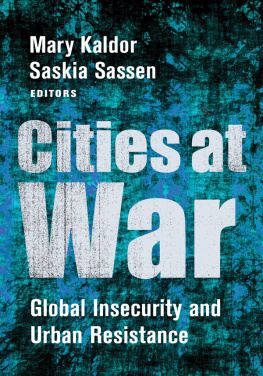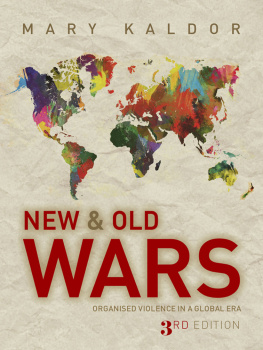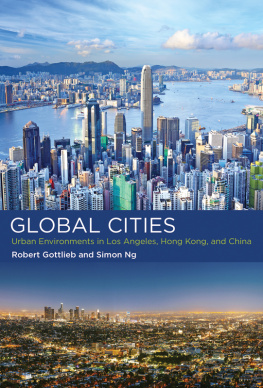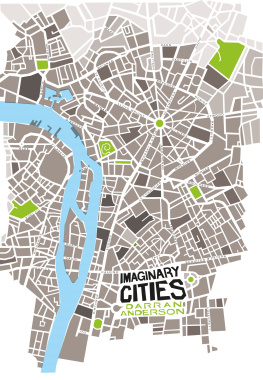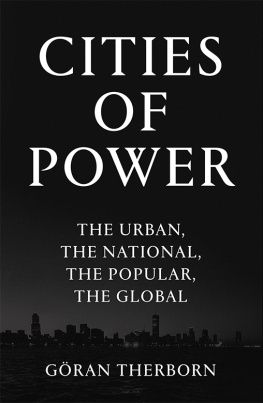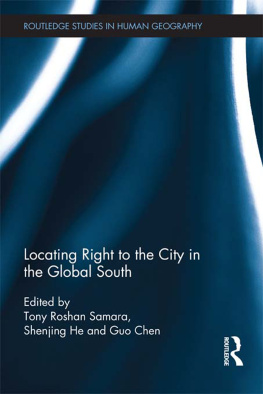Table of Contents
Cities at War
Cities at
War
Global Insecurity and
Urban Resistance
Mary Kaldor
Saskia Sassen
EDITORS
Columbia University Press New York
Columbia University Press
Publishers Since 1893
New York Chichester, West Sussex
cup.columbia.edu
Copyright 2020 Columbia University Press
All rights reserved
E-ISBN 978-0-231-54613-3
Library of Congress Cataloging-in-Publication Data
Names: Kaldor, Mary, author. | Sassen, Saskia, author.
Title: Cities at war: global insecurity and urban resistance / edited by Mary K. Kaldor and Saskia Sassen.
Other titles: Global insecurity and urban resistance
Description: New York: Columbia University Press, [2020] | Includes bibliographical references and index.
Identifiers: LCCN 2019035766 | ISBN 9780231185387 (cloth) | ISBN 9780231185394 (pbk.) | ISBN 9780231546133 (e-book)
Subjects: LCSH: Urban warfareDeveloping countriesCase studies. | Internal securityDeveloping countriesCase studies. | Metropolitan areasDeveloping countriesStrategic aspects. | Urban violenceDeveloping countriesCase studies. | Political violenceDeveloping countriesCase studies. | Low-intensity conflicts (Military science)Developing countries. | Human securityDeveloping countriesCase studies. | Sociology, Urban.
Classification: LCC U167.5.S7 K35 2020 | DDC 355.4/26dc23
LC record available at https://lccn.loc.gov/2019035766
A Columbia University Press E-book.
CUP would be pleased to hear about your reading experience with this e-book at .
Cover design: Lisa Hamm
Contents
T his book was supported by the European Research Council programme Security in Transition: An Inter-disciplinary Investigation of the Security Gap. We want to express special thanks to Ruben Andersson, who helped us organize a series of meetings to discuss the book and who helped to choose and edit the individual chapters. We also thank Dominika Spyratou, Amy Crinnion, and Makena Micheni for administrative assistance.
P erhaps the worst suffering in Syria has been experienced in Ghouta, a suburb in Eastern Damascus that was under siege from the beginning of the war in 2012 until a cease-fire in April 2018. It has been continuously bombarded by the regime and is where several large-scale chemical weapon attacks have taken place. Government forces and the armed opposition controlled what went in and out and maintained exorbitantly high prices for food and necessitiesthe consequence was extreme deprivation and starvation. But Ghouta is also the site of a dairy factory, which supplies much of the dairy products consumed in Damascus. Because the rest of Damascus needs yogurt and other dairy products, the farmer has negotiated a deal with the regime, creating a small safe haven inside Ghouta. This is what we will refer to as the yogurt run, a tiny opening in the siege that allows Ghoutas yogurt to reach places on both sides of the conflict.
We use the idea of the yogurt run as a metaphor to capture the presence of urban capabilitiesthe mutuality that underpins densely populated urban conurbations and that inherently provides a counter, however slight, to forcible fragmentation and closure, and to the dynamic of insecurity based on perpetual exclusions. A central argument in this book is that recognizing such urban capabilitieseven where we can least expect them to be presentis one key to understanding cities facing war or profound insecurity. One important implication is a better understanding of how inhabitants can maximize whatever pertinent yogurt runs are present in their city. Conventional armies rarely see these capabilities embedded in urban space. Irregular combatants see and use them for their purposes, which do not always coincide with what residents might want. We want to use this notion of urban capabilities to detect embedded vectors that can lead to the diluting or unsettling of conflict in cities.
This is a book about insecurity in cities. Today, the most extreme form of such insecurity is war, and the most extreme form of war involves an often asymmetric combination of conventional forces and myriad irregular groups. Contemporary wars are increasingly urbanized, whether we are referring to full-fledged asymmetric wars, or to terrorist attacks in cities outside the war zones, or to violent organized crime. In the past, conventional forces preferred to fight battles in open fields, and irregular groups based themselves in remote areas such as jungles or mountains. Today, the urban built environment has become the equivalent of jungles and mountainsboth as a way to hide and evade fighting and as a source of succor and support.
Contemporary wars involve forced displacement on a massive scale, swelling the conurbations where the majority of the worlds people now live. Newly arrived immigrants contribute to the vitality and creativity of the city, but they are also vulnerable to prejudice and frustration and the way in which traditions are reinvented, distorted, and instrumentalized in contemporary urban settings. Cities simultaneously nurture inclusive, cosmopolitan, and multicultural communities alongside old and new racisms; the politics of class based on growing income inequality and religious fundamentalisms; all of which leads to the active use of built environments to segregate, exclude, and worse. Todays insecure cities are crisscrossed by borders and divisions, walls and checkpoints, ghettoization and expulsions, sieges and violent attacks.
Much of the literature on cities and war focuses on the militarization or securitization of cities. This book instead treats the city as a lens through which to understand contemporary violence as well as contemporary peace. We are interested in the granular character of contemporary insecurity and the ways in which the city itself in effect talks back (Sassen 2012). Wars are usually analyzed through the prism of the nation-state; yet, it is often pointed out that contemporary wars are global and regional as well (Kaldor 2012). Our case studies are empirical investigations of a variety of cities from the perspective of the inhabitants and, as such, shed new light on how to explain, interpret, and perceive twenty-first-century war without the blinkers of geopolitical preoccupations.
Our approach brings with it a recognition that women and children are also key actors in these warsthey are not just victims. Going beyond the notion of war as mere combat, we must recover the multiple ways in which women and children play a role. Capturing their participation is not easy. Guns and tanks are dominant factors in conflict zones, and men are still the dominant users of guns and tanks. Yet women often play major roles in these warswith the Kurdish women fighters a powerful example. But any war requires sustaining the fighters. Gathering food is the most familiar factor. What is often neglected in this aspect of war situations is the fact that women are key actors in making connections with other groupsincluding enemy groupsto secure food.
War zones are much more than guns and tanks. Several works in the literature capture this expanded role of women, including girls, works that too often are overlooked as the focus remains on the guns and tanks. Also often overlooked is the fact that the search for food, water, and medications in each case is likely to require a capacity to negotiate with friends and with the enemy. Women engage in negotiations with all sorts of actors, including the enemy.



